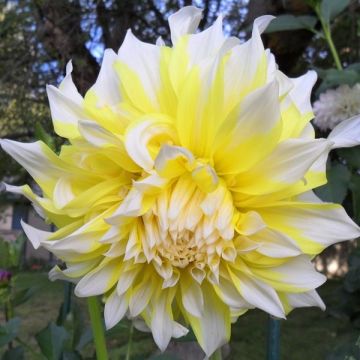Shipping country and language
Your country of residence may be:
Your country of residence is:
For a better user experience on our website, you can select:
Your shipping country:
-
Andorra
-
Austria
-
Belgium
-
Bulgaria
-
Canada
-
Chile
-
Croatia
-
Cyprus
-
Czechia
-
Denmark
-
Estonia
-
Finland
-
France
-
Germany
-
Greece
-
Hungary
-
Iceland
-
Ireland
-
Italy
-
Latvia
-
Lithuania
-
Luxembourg
-
Malta
-
Monaco
-
Netherlands
-
Poland
-
Portugal
-
Romania
-
Slovakia
-
Slovenia
-
Spain
-
Sweden
-
Switzerland
-
United Kingdom
We only deliver seed and bulb products to your country. If you add other products to your basket, they cannot be shipped.
Language:
-
French
-
German
-
Spanish
-
English
-
Italian
My Account
Hello
My wish lists
Log in / Register
Existing customer?
New customer?
Create an account to track your orders, access our customer service and, if you wish, make the most of our upcoming offers.


Dahlia My Hero
Dahlia My Hero
Dahlia My Hero
Order in the next for dispatch today!
Dispatch by letter from €3.90.
Delivery charge from €5.90 Oversize package delivery charge from €6.90.
More information
This item is not available in your country.
Schedule delivery date,
and select date in basket
This plant carries a 6 months recovery warranty
More information
We guarantee the quality of our plants for a full growing cycle, and will replace at our expense any plant that fails to recover under normal climatic and planting conditions.
From €5.90 for pickup delivery and €6.90 for home delivery
Express home delivery from €8.90.
Does this plant fit my garden?
Set up your Plantfit profile →
Description
The Dahlia 'My Hero' is an exceptional variety of giant Dahlia, both in terms of the size of its flowers (25 to 27 cm) and their twisted-crumpled shape, and their pinkish-purple colour with a silvery underside. They are impressive and borne by a tall plant that can reach 1.50 m in height. Pair it in your beds or bouquets with light blooms or foliage plants.
The Dahlias, from the asteraceae family, have ancestors originating from the high plateaus of Mexico. Thousands of horticultural varieties have been obtained by humans, with several new ones created each year. The 'My Hero' variety, selected in 2019 in the USA, is part of the so-called "giant" Dahlias because its flowers are particularly wide and it is tall, between 1.10 m and 1.50 m high depending on growing conditions. It is also classified among the Decorative Dahlias, a horticultural category defined by the flower's form. In this group, the colourful ligules of the head are arranged in a regular spiral, they can be curved towards the stem or frilled, for example. The flowering of this 'My Hero' cultivar begins in July and ends in October if flowers are regularly cut. These are actually inflorescences called heads. The "petals" or ligules are quite wide, more or less twisted, oriented in all directions, those in the center are smaller and more curled. They are pinkish-purple on the top, with a silvery white underside. The central ligules are violet, striped with white. The habit is bushy and erect, and the very branched stems are hollow. The leaves are pinnatisect, meaning they divide into 3 or 5 toothed lobes. The leaves are quite bright green, with slightly purplish stems. To extend the flowering period and promote floral reflowering, remove faded flowers. Feel free to create beautiful colourful bouquets throughout the season.
The Dahlia 'My Hero' pairs particularly well with pink, purple, and white blooms. Pair it with the giant Dahlias 'White Perfection' and 'Otto's Thrill' for example. In a bed, it blends perfectly with white cosmos 'Sensation Purity' and 'Fizzy Pink'. For an exotic touch, try it with Cannas like 'Felix Roux' with dark foliage.
Classic border plants and cottage garden favourites, Dahlias accompany the most beautiful flowers, but are also appreciated alongside vegetable plants. In Mexico, this tuberous plant was initially cultivated as a root vegetable. However, its mediocre taste qualities relegated it to the status of an ornamental plant.
Report an error about the product description
Plant habit
Flowering
Foliage
Botanical data
Dahlia
My Hero
Asteraceae
Cultivar or hybrid
Other Giant Dahlia
Planting and care
Plant your 'My Hero' dahlias in the spring in a deeply worked soil enriched, for example, with crushed horn or dehydrated blood. Place your tuber and crumble the soil well to fill without air pockets. Your dahlia should be covered with 6 cm of soil. At the end of planting, pour a litre of water. Water regularly for the first 6 weeks to help with root growth. Stake if necessary. Dahlias are sensitive to cold, so they need to be overwintered. In November, the first frosts will blacken the foliage, signaling it's time to dig them up. Carefully unearth the tubers. Remove as much soil as possible. Let the foliage dry so the tuber can replenish its reserves. When the foliage is dry, cut the stems to 10 cm from the tuber. Lay out your bulbs in a crate on newspaper. Store away from frost in a dry, cool, dark place.
Planting period
Intended location
Care
This item has not been reviewed yet - be the first to leave a review about it.
Dahlias
Haven't found what you were looking for?
Hardiness is the lowest winter temperature a plant can endure without suffering serious damage or even dying. However, hardiness is affected by location (a sheltered area, such as a patio), protection (winter cover) and soil type (hardiness is improved by well-drained soil).

Photo Sharing Terms & Conditions
In order to encourage gardeners to interact and share their experiences, Promesse de fleurs offers various media enabling content to be uploaded onto its Site - in particular via the ‘Photo sharing’ module.
The User agrees to refrain from:
- Posting any content that is illegal, prejudicial, insulting, racist, inciteful to hatred, revisionist, contrary to public decency, that infringes on privacy or on the privacy rights of third parties, in particular the publicity rights of persons and goods, intellectual property rights, or the right to privacy.
- Submitting content on behalf of a third party;
- Impersonate the identity of a third party and/or publish any personal information about a third party;
In general, the User undertakes to refrain from any unethical behaviour.
All Content (in particular text, comments, files, images, photos, videos, creative works, etc.), which may be subject to property or intellectual property rights, image or other private rights, shall remain the property of the User, subject to the limited rights granted by the terms of the licence granted by Promesse de fleurs as stated below. Users are at liberty to publish or not to publish such Content on the Site, notably via the ‘Photo Sharing’ facility, and accept that this Content shall be made public and freely accessible, notably on the Internet.
Users further acknowledge, undertake to have ,and guarantee that they hold all necessary rights and permissions to publish such material on the Site, in particular with regard to the legislation in force pertaining to any privacy, property, intellectual property, image, or contractual rights, or rights of any other nature. By publishing such Content on the Site, Users acknowledge accepting full liability as publishers of the Content within the meaning of the law, and grant Promesse de fleurs, free of charge, an inclusive, worldwide licence for the said Content for the entire duration of its publication, including all reproduction, representation, up/downloading, displaying, performing, transmission, and storage rights.
Users also grant permission for their name to be linked to the Content and accept that this link may not always be made available.
By engaging in posting material, Users consent to their Content becoming automatically accessible on the Internet, in particular on other sites and/or blogs and/or web pages of the Promesse de fleurs site, including in particular social pages and the Promesse de fleurs catalogue.
Users may secure the removal of entrusted content free of charge by issuing a simple request via our contact form.
The flowering period indicated on our website applies to countries and regions located in USDA zone 8 (France, the United Kingdom, Ireland, the Netherlands, etc.)
It will vary according to where you live:
- In zones 9 to 10 (Italy, Spain, Greece, etc.), flowering will occur about 2 to 4 weeks earlier.
- In zones 6 to 7 (Germany, Poland, Slovenia, and lower mountainous regions), flowering will be delayed by 2 to 3 weeks.
- In zone 5 (Central Europe, Scandinavia), blooming will be delayed by 3 to 5 weeks.
In temperate climates, pruning of spring-flowering shrubs (forsythia, spireas, etc.) should be done just after flowering.
Pruning of summer-flowering shrubs (Indian Lilac, Perovskia, etc.) can be done in winter or spring.
In cold regions as well as with frost-sensitive plants, avoid pruning too early when severe frosts may still occur.
The planting period indicated on our website applies to countries and regions located in USDA zone 8 (France, United Kingdom, Ireland, Netherlands).
It will vary according to where you live:
- In Mediterranean zones (Marseille, Madrid, Milan, etc.), autumn and winter are the best planting periods.
- In continental zones (Strasbourg, Munich, Vienna, etc.), delay planting by 2 to 3 weeks in spring and bring it forward by 2 to 4 weeks in autumn.
- In mountainous regions (the Alps, Pyrenees, Carpathians, etc.), it is best to plant in late spring (May-June) or late summer (August-September).
The harvesting period indicated on our website applies to countries and regions in USDA zone 8 (France, England, Ireland, the Netherlands).
In colder areas (Scandinavia, Poland, Austria...) fruit and vegetable harvests are likely to be delayed by 3-4 weeks.
In warmer areas (Italy, Spain, Greece, etc.), harvesting will probably take place earlier, depending on weather conditions.
The sowing periods indicated on our website apply to countries and regions within USDA Zone 8 (France, UK, Ireland, Netherlands).
In colder areas (Scandinavia, Poland, Austria...), delay any outdoor sowing by 3-4 weeks, or sow under glass.
In warmer climes (Italy, Spain, Greece, etc.), bring outdoor sowing forward by a few weeks.



















